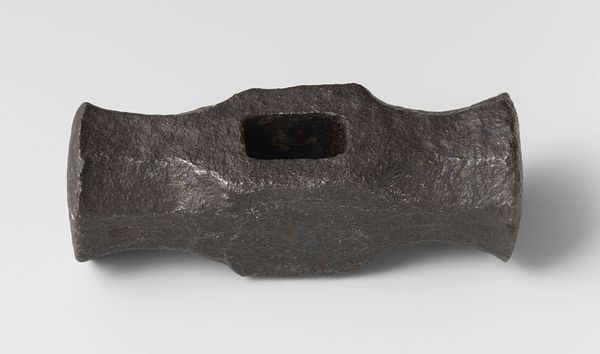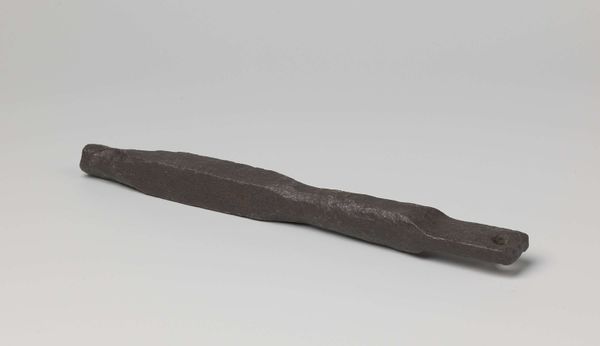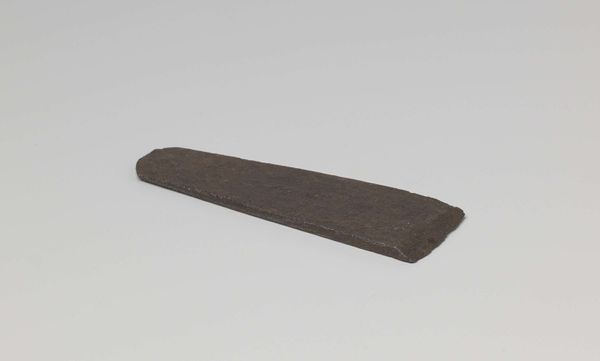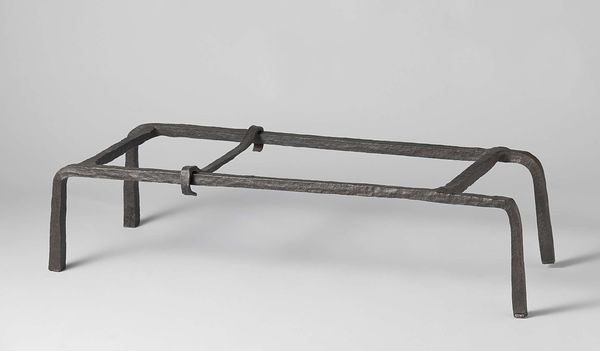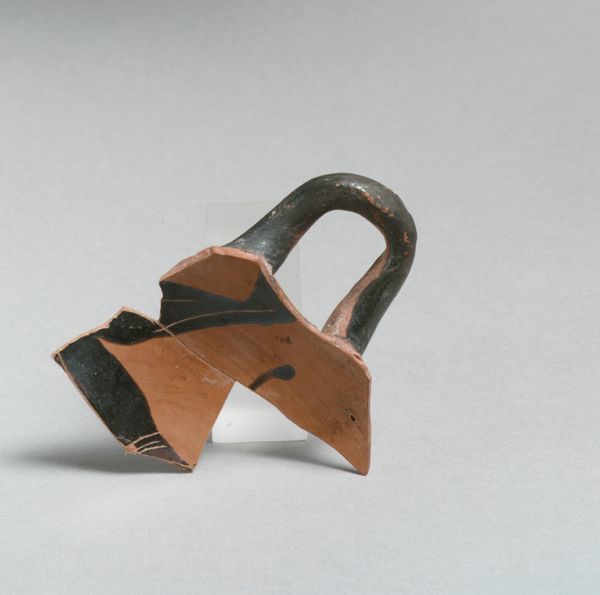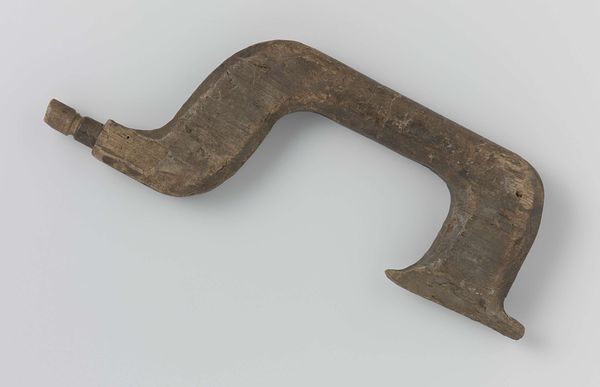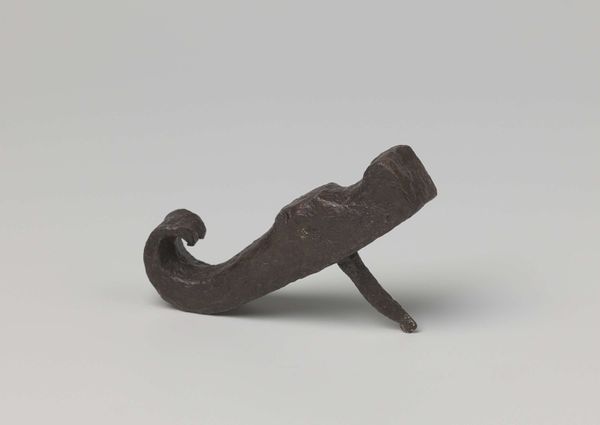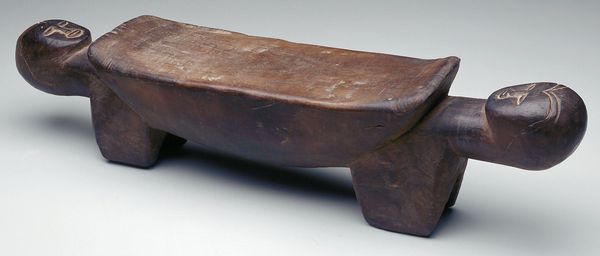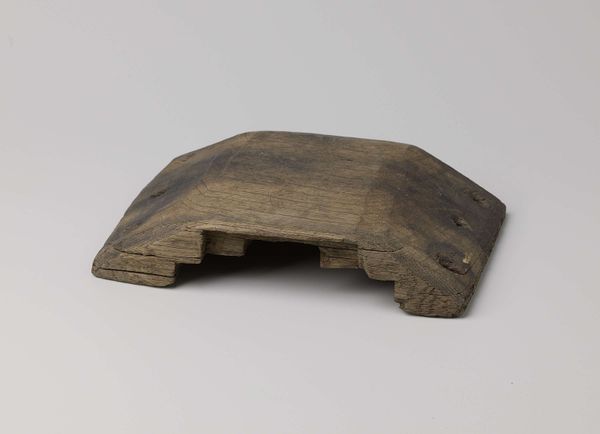
metal, sculpture, wood
#
medieval
#
rounded shape
#
metal
#
form
#
geometric
#
sculpture
#
wood
Dimensions: height 6 cm, width 26 cm, depth 10 cm
Copyright: Rijks Museum: Open Domain
This iron tool, of unknown date and maker, presents a stark study in form and function. The eye is immediately drawn to its division into three distinct parts: the handle, the central mounting block, and the broad, curved blade. The tool’s material texture, its rusted iron surface, speaks to a history of labour. The geometry here is instructive. Note how the handle's straight lines give way to the mounting block’s precise square. This shape then transitions into the blade’s organic curve. We might read this formal progression as a semiotic sequence: the handle, a signifier of human effort; the mounting block, of structural integrity; and the blade, of transformative power. In viewing this object, we consider how form is never neutral. It is a carrier of meaning, shaped by the constraints of function, material, and the cultural codes of its time. This tool invites us to examine how such codes influence both the making and the reception of even the most utilitarian objects.
Comments
rijksmuseum about 2 years ago
⋮
Each ship was fitted with carpentry tools for making repairs. On Nova Zembla, these tools came in handy for building the ‘Safe House’. It is striking how little the tools have changed over the centuries; many of them can still be found in modern toolboxes.
Join the conversation
Join millions of artists and users on Artera today and experience the ultimate creative platform.

